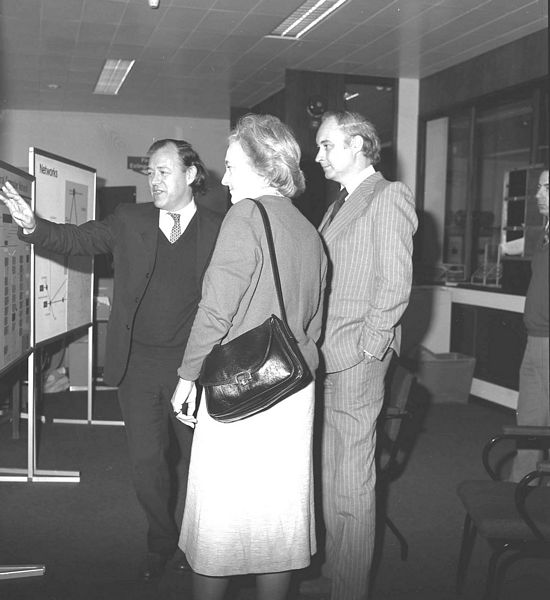

The UK was the first country to have a public packet network. Experimental Packet Switched Service (EPSS) was announced by the Post Office in 1973 and became operational in 1977. The aims were:
Packet Switching Exchanges were set up in London, Manchester and Glasgow.
The Atlas group were interested in EPSS and a 2.4 kbaud connection to the Manchester exchange was obtained in mid-1974. Initially this was aimed at making terminal access available to the 1906A at locations that did not have a workstation. The EPSS exchange was due to open in about a year. Code was developed in 1974 to deal with EPSS protocols. Much of 1975 was spent waiting for the service to open which did not happen until after the merger with Rutherford Laboratory.
In 1974, John Burren's Networking Group became actively involved in the Study groups developing the specification of the protocols for EPSS, particularly terminal, remote job entry and file transfer.
A 48 kbit/sec line to the London exchange was established in 1975 and a GEC 2050 was developed as an EPSS gateway attached to the 360/195.The existing 2050 RJE workstations had their software extended to allow direct connection by the workstations to the EPSS network. A slow speed, 4.8 kbaud, connection was also installed to the Glasgow exchange for testing purposes. So the Chilton site had connections to all three of the EPSS Exchanges.
The formal opening of EPSS took place in April 1977.
EPSS became PSS in January 1980. At that time, the protocols changed from the locally-defined EPSS protocols to the ISO Standard X25 protocols.
At the same time, work progressed on a private network to join the Daresbury Laboratory to the Chilton site running EPSS-compatible protocols. This allowed the connections to run either on the existing private lines or via EPSS.
By the end of 1977, SERCNet as it was called was in routine operation. About 400 calls per week were being received from terminals and 60,000 terminal messages and 750,000 lines of terminal output were routed by the network to the remote university user. Workstations were able to access the IBM 360/195 and ICL 1906A at Chilton and the IBM 370/165 at Daresbury. By the end of 1978, SERNet had become predominantly an X25-based network with the 2050 workstations gradually moving to be X25-based.

1979 saw the arrival of SERCNet as a major provider within the academic community. The CRAY's arrival at Daresbury meant that many users needed access to more than one site. The provision of multi-user systems in university departments by the Interactive Computing Facility vastly increased the number of hosts which rose to 25 during the year. A million packets were being transmitted a week.